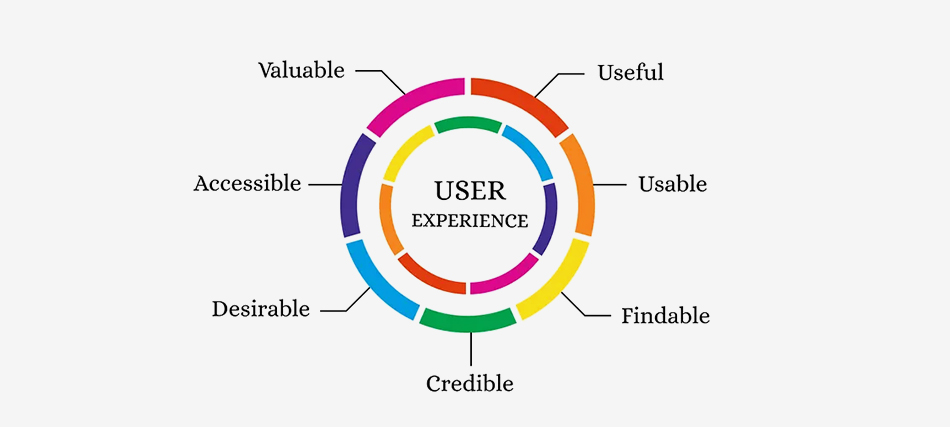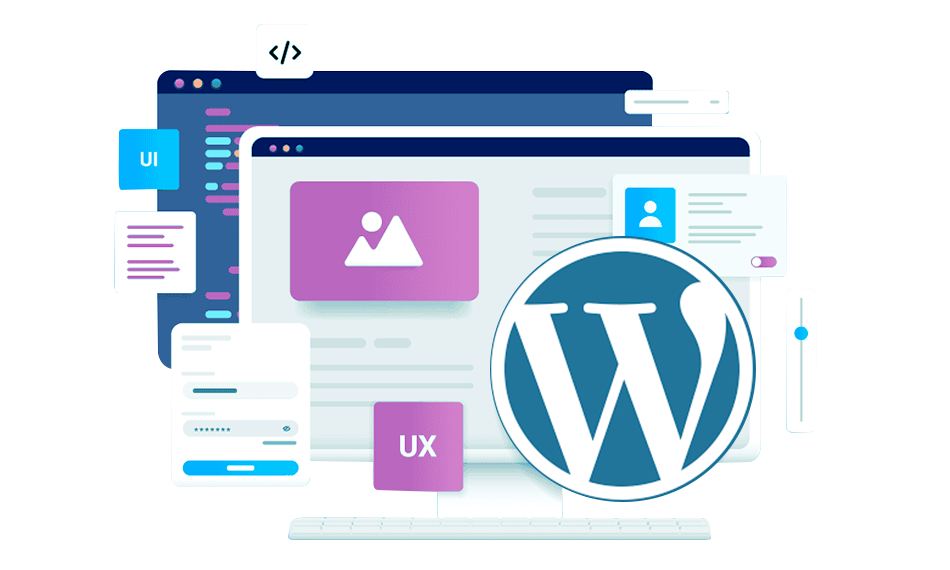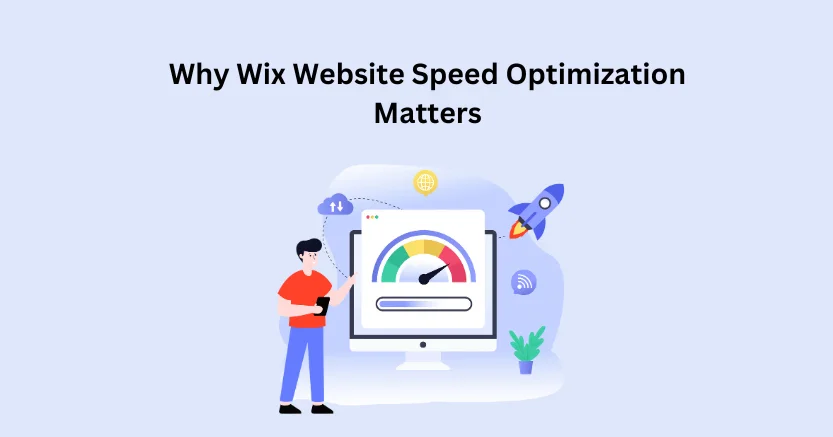TL;DR: In 2025, both WordPress user experience and website performance matter for ranking your website higher. To optimize the overall WordPress performance, focus on user experience, simple and clean design, simple navigation, and mobile optimization. As speed is among the major Google ranking factors, methods like caching, image optimization, and fast hosting can be used to enhance website speed.
User experience (UX) and performance are the most important factors for any website to succeed in the digital world and rankings. Just like users, Google also likes high-performing websites with better user experience.
A good WordPress user experience is the combination of excellent design and lightning-fast speed, which enhances user engagement, customer retention rate, and repeat visitors.
It’s important to make your WordPress site easy to navigate and fast-loading to enhance user experience and conversions. This complete guide will explain why the WordPress user experience is important and how to enhance it for better website performance.
Why User Experience Matters for a WordPress Site in 2025

As we get closer to 2025, users have higher expectations than ever. Visitors are likely to abandon your site in seconds if it is sluggish, poorly optimized, and hard to navigate.
The WordPress user experience defines how people interact with your content, products, and services. People will be more likely to stay on your site longer and convert if it is easy to navigate, loads quickly, and looks visually engaging.
A high-performance WordPress site not only reduces bounce rate and session durations but also improves SEO rankings. Remember, Google’s Core Web Vitals still give higher rankings to sites that are both fast and user-friendly. This makes UX optimization an important aspect of a successful business.
What are the 7 Elements of User Experience?

Before we talk about how to improve WordPress UX and performance, let’s go through the basics of a good user experience. Every successful website has these seven parts at its core:
1. Findable
Users should be able to easily find what they are looking for. WordPress UX best practices include clear menus, internal linking, and search functionality.
2. Usable
It’s crucial for your site to be easy to browse and navigate. Visitors can get frustrated when a site is difficult to use. By keeping your site’s menus, layouts, and actions simple, you can improve your WordPress user experience.
3. Useful
The website should provide value to the users. Every page, feature, and piece of content should help your visitors in some way or meet a need.
4. Credible
A website that is trustworthy makes users feel safe. Reviews, SSL certificates, and a professional design all help make a WordPress site more credible.
5. Desirable
Branding and design should evoke positive feelings in people. The visual appeal of a website is a big part of improving the user experience (UX) and encouraging visitors to stay longer.
6. Accessible
Everyone should be able to use your website, regardless of their location and device type. Accessibility should be a key part of mobile-friendly WordPress design.
7. Valuable
Finally, every interaction should be useful for both the business and the users. Your website will help you succeed in the long run if it has a perfect balance of performance and usability.
Tips for Improving WordPress User Experience (UX)

Improving WordPress UX isn’t just about how it looks, it’s also about providing a smooth, engaging, and intuitive experience for the user. In 2025, here are the most effective practices to optimize WP site experience.
1. Clean and Intuitive Design
A clean, simple layout is the key to a successful WordPress site. Keep a clear visual hierarchy, consistent branding (colors, fonts, and tone), and organized pages with optimal white spaces.
Moreover, headings and subheadings can help people scan your content more easily. Don’t put too many elements on a single page so that consumers get confused. Simplicity enhances both usability and speed, which are two major factors that improve WordPress UX.
2. Content Readability
People stay more engaged with the readable content. Write in short paragraphs, use the active voice, and a conversational tone. Use bullet points, visuals, or quotes to break up big blocks of text.
Content that is easy to read and interesting not only gets people’s attention, but it also helps with SEO. When people spend more time on your pages, it signals search engines that your site is useful, boosting more traffic and visibility.
Attractive design without readable content is one of the most overlooked WP user experience best practices, leading to poor engagement.
3. Simplify Navigation on WordPress Site
A menu that is hard to understand can ruin your WordPress experience. Make your site’s structure easier to use so that people can quickly discover what they need. Group related pages logically and use descriptive labels instead of generic ones like “Services” or “Info.”
You can also consider adding a sticky navigation bar and a search box that stands out. These features make navigation easy and improve the WordPress site user experience as well, especially for mobile users.
4. Efficient Usage of Site Media
Images and videos keep people engaged on your site, but they can also slow down your website if not optimized properly. Use advanced formats like WebP and compress media files before publishing to optimize WordPress performance.
You can also implement lazy loading to ensure that videos and images only load when they are visible in the viewport. This method improves the page load significantly, enhancing both usability and performance.
Handling media efficiently is one of the simplest yet most effective ways to enhance WordPress UX without compromising design quality.
5. Responsive and Mobile-Friendly Design
Mobile-first design will no longer be an option in 2025. A mobile-friendly WordPress site ensures that your layout, buttons, and media all fit seamlessly on multiple screen sizes.
More than half of all web traffic comes from mobile devices. Google’s mobile-first indexing gives priority to sites that work well on all devices. Always test your WordPress site on different devices and screen sizes to identify any potential usability issues.
6. Improve Content Structure
A well-organized information structure will increase readability, and customers won’t get lost. Use headers (H1, H2, H3) wisely, add bullet points, and include relevant images. A logical content arrangement makes it easier for users to find what they’re looking for.
Content structure optimization not only improves WordPress UX but also helps your SEO by making it easier for search engines to find your content.
7. Optimize your WordPress Website Speed
One of the most important things that affects the user experience is your WordPress website’s speed. Users can get frustrated and leave your site if it loads slowly. To make sure your pages load quickly, use caching, lazy loading, and compress resources.
People expect pages to load in less than three seconds. If they take longer than that, they may lose interest, resulting in increased bounce rates.
You’re not just speeding up your WordPress site when you optimize its performance; you’re also enhancing the overall UX.
8. Strong Security Measures for your WordPress Website
Security is really important for making users feel safe and happy. Use WordPress security plugins, install SSL certificates, and keep your software up to date to build user trust and site security. People who visit your site should always feel safe interacting with it.
To improve WordPress site user experience, you need to ensure security on your site, especially when managing user accounts, e-commerce transactions, or user personal data on your WordPress site.
9. Clear Calls to Action (CTAs)
Each page on your site should have a clear goal. Well-placed CTAs help users to take the next steps, like signing up, purchasing something, or getting in touch with you. Make sure your CTAs are brief, clear, and easy to find.
CTAs are an important part of WordPress UX best practices as they can boost engagement and conversions when utilized correctly.
10. Simplify Form Structures
Users may get confused and frustrated with forms that are too long or hard to understand. To make more people fill out forms, keep them short and straightforward. Use autofill and clear error messages. This little change can make a big difference in improving site usability.
11. Ensure Accessibility for Everyone
An overall user experience is that everyone can use your website, from any location, with any device type. Use the right color contrast, alt text for images, and keyboard-friendly navigation to follow the Web Content Accessibility Guidelines (WCAG).
Enhancing accessibility not only increases visitors on your site, but it also boosts your SEO and reputation.
12. A/B Testing and Continuous Optimization
There is no flawless website from the beginning. Try out different layouts, colors, or CTAs with A/B testing to determine which ones work best. Testing things over and over guides you to make design and content changes that will improve the WordPress site’s user experience over time.
How to Improve Your WordPress Website Performance

Performance ensures that everything functions well behind the scenes, while UX focuses on usability and engagement. To optimize WordPress performance for maximum speed and reliability, do the following:
1. Pick a Good Hosting Service
The speed and uptime of your site depend on where it is hosted. For the best results, use managed WordPress hosting or a strong VPS. Quality hosting is the backbone of the site’s user experience and performance.
2. Pick a Lightweight Theme
Don’t use hefty themes with too many features that aren’t needed. Lightweight themes are faster to load and easier to customize. This one action can optimize WordPress performance significantly.
3. Implement Caching
Caching stores the content that is often accessed by the user. WordPress caching helps speed up page loading, serving content faster to every location.
4. Optimize WordPress Web Images
One major reason for a slow-loading website is often the large size of images. To make WordPress easier to use and faster at the same time, compress your images before uploading them, utilize the WebP format, and turn on lazy loading.
5. Use a CDN (Content Delivery Network) for WordPress
A CDN (Content Delivery Network) distributes your site’s content over various servers across the world, so users can load it faster regardless of their location. This step is very important to improve WordPress site performance on a global scale.
6. Combine and Minify Files
Minify CSS, JavaScript, and HTML files to reduce size and improve site load. Plugins like Autoptimize or Fast Velocity Minify can efficiently do this job for you.
7. Optimize the Site Database
Clean up your WordPress database regularly by deleting old drafts, revisions, and spam comments. A clean database reduces server load times and improves query performance.
8. Limit the Number of Plugins
Your site will load slowly with unnecessary plugins. Thus, only install the ones you really need and remove the inactive ones and those you don’t need further. Streamlined plugins improve both WordPress user experience and safety.
9. Keep WordPress, Themes, and Plugins Updated
Updates often fix important security and performance issues. Keeping your website up to date ensures that it functions smoothly and safely, helping to improve the WordPress site user experience.
10. Use the Latest PHP Version
Upgrading to the most recent stable version of PHP can significantly enhance performance. It’s one of the simplest ways to optimize WordPress without harming the design of your WordPress site.
Final Thoughts
A successful website consists of seamless usability and strong performance. You have to focus on both improving WordPress user experience and performance to increase conversions, impressions, and the overall success of your business.
Keep in mind that a mobile-friendly WordPress design, a clean structure, and regular performance checks are all important for long-term success. If you follow these WordPress UX best practices, you’ll not only make WordPress UX better, but you’ll also ensure a future-ready website ready for the digital needs of 2025 and beyond.
FAQs
Q1. How can I improve WordPress Performance?
Q2. How does the performance of a website affect the WordPress user experience?
Q3. Can mobile optimization improve WordPress UX?
Q4: What are the best plugins for WordPress UX and performance?
Q5. What are the seven Principles of a good user experience?
- Useful – Should serve a real purpose.
- Usable – Easy to navigate.
- Findable – Information is easy to locate.
- Credible – Builds trust and reliability.
- Desirable – Visually appealing and engaging.
- Accessible – Inclusive for all users.
- Valuable – Provides a clear benefit to both users and the business.















































